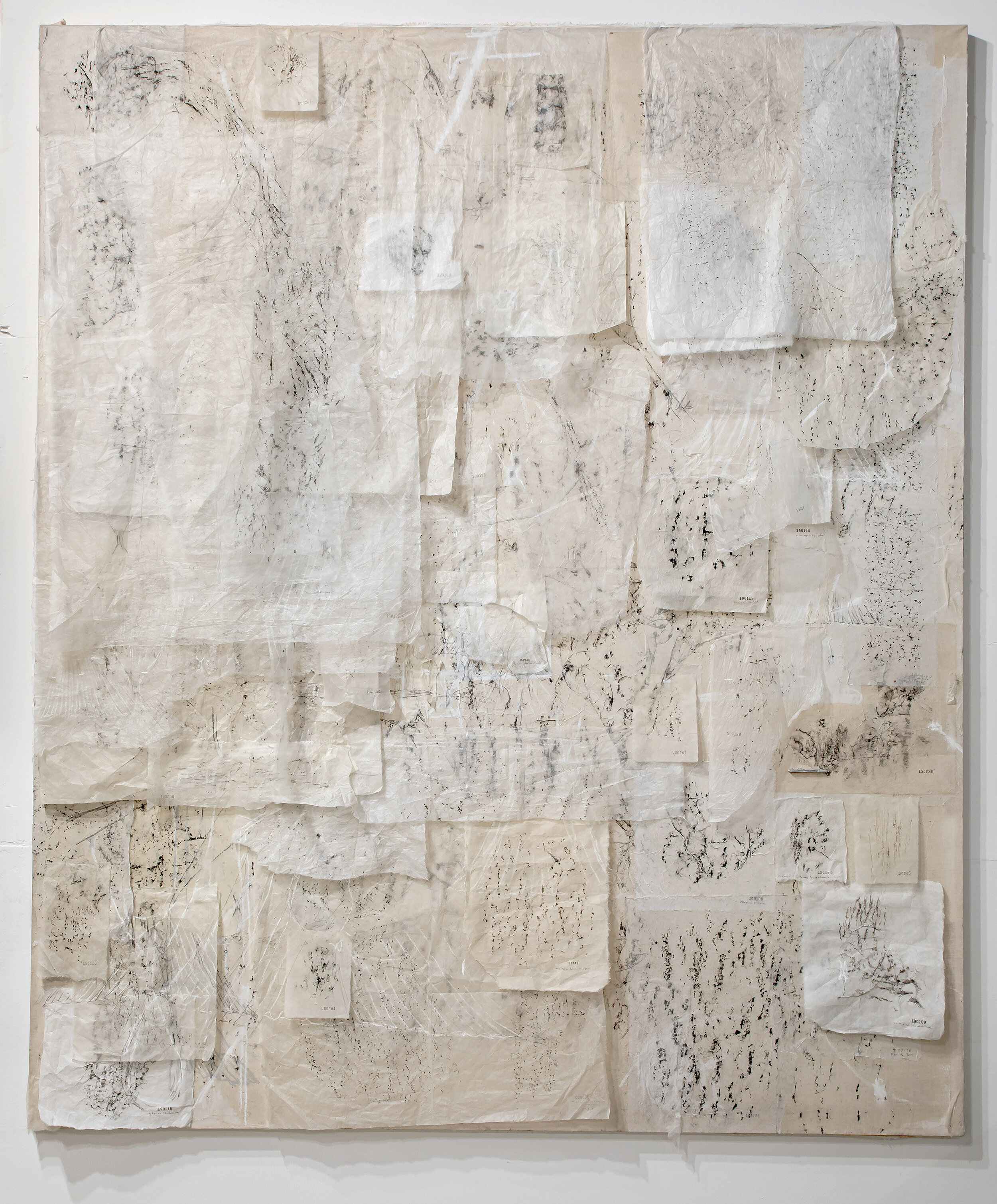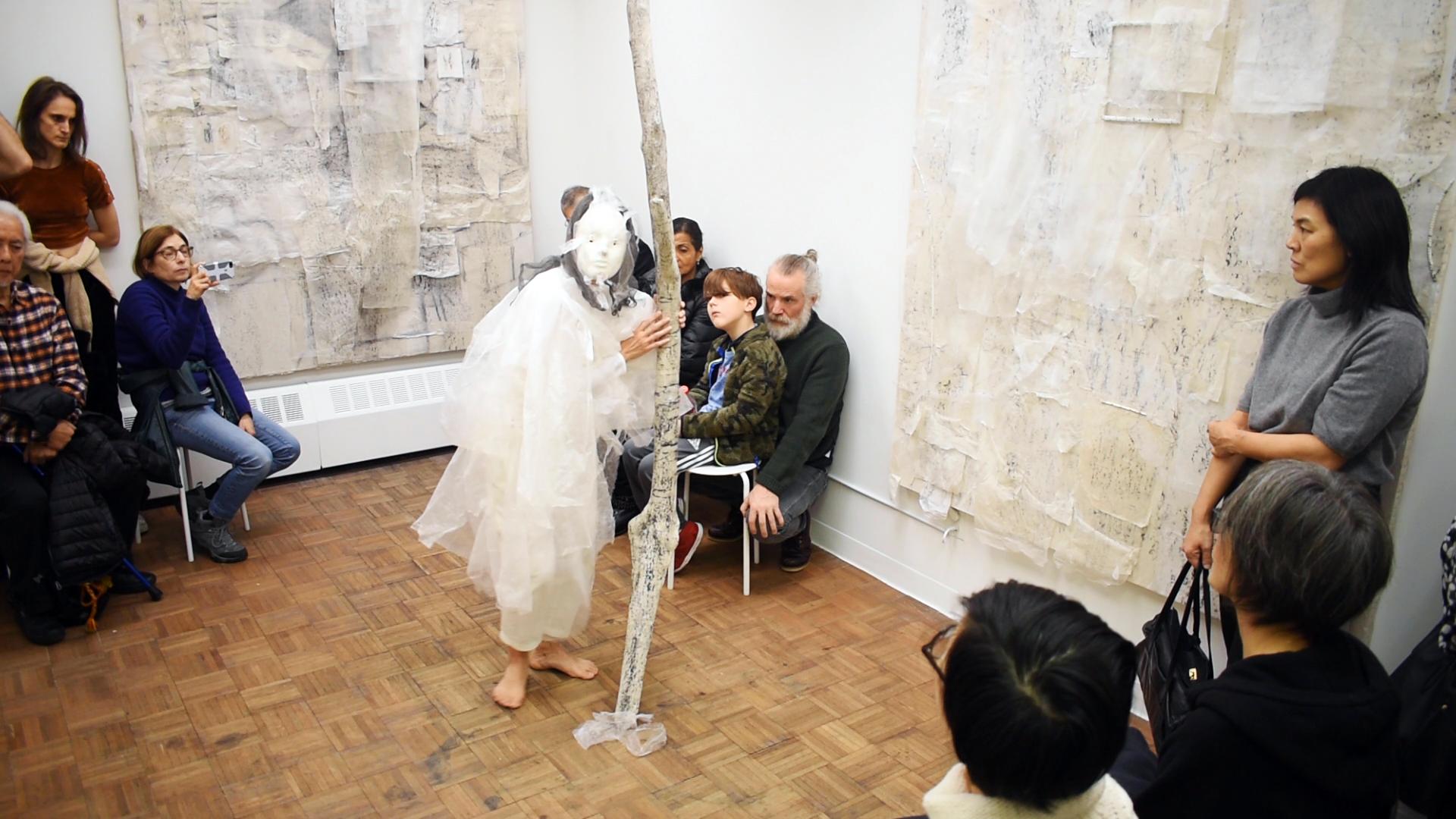PART I: THE PORTRAIT SERIES
2019 - present
Keiko Miaymori’s family was torn apart by WWII, and her Japanese-American grandmother not only witnessed, but experienced conflict within her country and her family. From the moment the war started, Keiko’s grandmother was labeled a traitor by both countries on the basis of her nationality, that of her spouse, and her ancestors. Being rejected by both sides of her heritage and living with this duality became the inspiration for Keiko Miyamori’s artistic focus on exploring what lies beyond the surface.
In 2019, she returned to her hometown of Yokohama, Japan, to take part in the BankART1929 Stations Residency Program. It was here in the urban warehouse that she took the budding idea of her Portrait Series and brought it to life. The Portraits are composed of layers of tree rubbings made on Washi paper. Each layer on the canvas represents a unique memory and experience from Miyamori’s existence. The layers of Washi flow and ebb together, keeping the canvas alive and constantly moving.
Portrait of Myself No. 2. Washi, Charcoal, Acrylic, Chalk, on Linen at BankART1929 Station, 2019
Portrait of Being at mhPROJECT nyc, New York, 2019
Portrait of Myself No. 1 2019 Washi, Charcoal, Acrylic, Chalk on Linen. 84 x 66 in.
“… the connections become more apparent, allowing the viewer to look inward and see their own path within one of Miyamori’s Portraits.”
Black and white charcoal tree rubbings on Washi are not vivid. There is nothing dramatically striking at first glance, just as the individual often only has fleeting memories. The Portraits begin to look similar to one another, as the connections that bring them together become more apparent, allowing the viewer to look inward and see their own path within one of Miyamori’s Portraits.
PART II - PORTRAIT OF A NOVELIST
2019
While preparing her Portrait Series in Japan, Miyamori was invited to create an exhibition at Jogetsuan, a historically revelant site in Japan. As she began researching the site’s original owner, Miyamori happened upon renowned author Takeo Arishima.What struck Miyamori was not a fascination with his writing, but rather that their paths had intersected through places and people, across oceans, albeit 100 years apart. In an act of using her art to connect her path, to that of others, Miyamori began creating Arishima’s layers from his hometown, as well as places he visited in Japan and the United States. This collection of works was named Portrait Of A Novelist.
Jogetsuan, Japan
Portrait of a Novelist was displayed at the location of Arishima’s suicide, at his summer house Jogestuan, now under the care of the Literary Museum Of Karuizawa. The charcoal she used to create the tree rubbings on Washi layers, was also found in the forests at the original location of Jogetsuan. The exhibit carried a total of 80 pieces, including several framed portraits, tree rubbings, a series of Washi covered books that influenced the author, that visitors could sit and read, as well as clippings of tabloid stories of his suicide.
Portrait Of A Novelist - Niseko Arishima Farm Liberation Declaration 2019 Washi, Charcoal, Wood 12 ¼ x 15 ¼ in.
Charcoal found in Mikasa, at the original site of
Arishima’s final resting place
Visitors at Jogetsuan reading Washi covered books that inspired Arishima
PART III - PORTRAIT OF BEING
While Part I & II deal with our connectedness, our intersecting paths and the memories that comprise our layered existence, Part III of the Portrait Series deals with the act of transformation through memory. With Part III, Miyamori took the more refined pieces from her original series, and began to tear out some of the number codes representing each memory. As time passes, our emotions connected with our memories transform, as do we.
Portrait of Myself No. 2 (Transformed)
Portrait of Myself No. 3 (Transformed) in Portrait Of Being, at mhPROJECT nyc, New York, 2019
As part of the exhibit, Miyamori invited contemporary dancer Mutsuyo Isaacs to create an interpretative performance at mhPROJECT nyc. While reflecting on her own life, Mutsuyo’s painful history of losing her entire family to the Great Hanshin Earthquake surfaced. On January 17, 1995, the southern part of Hyōgo Prefecture in Japan was hit by a devastating earthquake, which took over 4,500 lives in a single day.
Installation view in Portrait of Being, at mh PROJECT nyc, New York, 2019
Wearing layers of undulating Washi and moving through the space, Mutsuyo began to tell the story of her loss. As she moved closer to the canvas, the Washi interacted with the energy of her body, creating connections between the many layers, but also with the people in the space. She continued to place a Washi covered frame on different layers within each portrait, focusing on different memories, before finally releasing them. Just as the rubbings offer Miyamori a way to heal her own scars, so do they offer those that share the space with her art, to transform themselves by releasing the emotions connected to their own memories.
Performance by Mutsuyo Isaacs in
Portrait of Being at mhPROJECT nyc, New York, 2019













